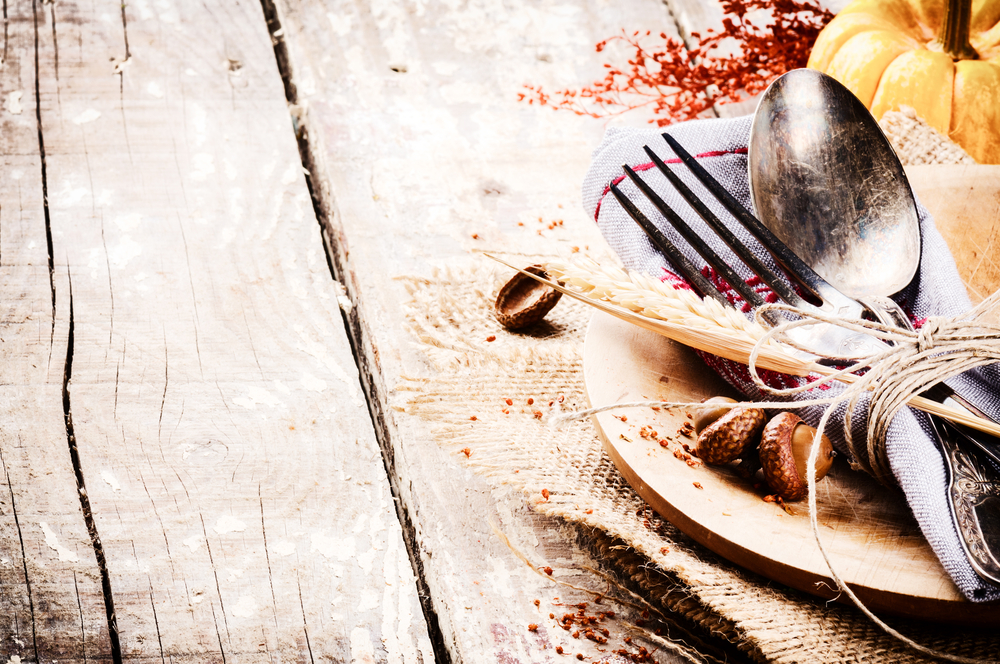What It’s Like To Have An Eating Disorder On Thanksgiving
Seeing the food on the table is like glancing out of the window at twelve thousand feet. Grabbing a plate feels like free-fall.
By Tyler Keenan
There’s a fine line between skydiving and Thanksgiving dinner — at least for those of us who struggle with disordered eating.
Walking into your grandparents’ house feels less like a family reunion and more like climbing into a remarkably small airplane that you’ll jump out of at any moment. Seeing the food on the table is like glancing out of the window at twelve thousand feet. Grabbing a plate feels like free-fall.
I guess skydiving and holiday dinners both require that we let go of control — something we “disordered eaters” aren’t great at when it comes to food. We need structure, we need constraint — Where is the food scale? The measuring cups? The low-fat/non-fat/never-fat condiment options? How do these people live like this?
When you finally fill your plate with food, it feels like you’re giving yourself away. As if the moment you enter the vicinity of food, everyone in the room will know you’ve been obsessing over this moment for the last two weeks. They’ll see the fear and anxiety flood you while you try to determine how much food a normal person would eat. “Is this too much? Or too little? Are they watching me? Why am I so fucking weird? Maybe I should binge.”
And after awkwardly putting food onto your plate, you make your way to the dinner table. All of your loved ones are sitting there — except for you. Your body is there, but your mind is elsewhere — tangled in thoughts of imaginary nutrient mathematics, drowning in the fear of caloric surpluses. You’d join in on the conversation if you weren’t so busy being overwhelmed by guilt and contemplating all of the ways that you can compensate for this tomorrow.
You lift your eyes from your plate intermittently — usually only when you hear your name. And when your name is said, it seems as if people only want to discuss the food: “So, how’s the stuffing? Do you want some more? Here, I’ll get you some dessert! I made pie.”
Oh god, the anxiety. Play it cool. We’ll get through this.
The dining experience I just described might seem exaggerated to some. But to others, these emotions are real. They are tangible and, for some, understated by my description.
And that’s okay.
Nobody who is scared of heights jumps out of an airplane without feeling nervous, and no one with an eating disorder arrives to Thanksgiving dinner without a bit of anxiety. That’s okay. Both situations can be dealt with in a similar way: by surrendering to the experience.
When you’re eating, treat it like free-fall: scary, yes — but also beautiful. Let go and allow the experience in, rather than resisting it. Take time to show gratitude for the things in front of you: the fact that you’re alive, you’re at a table with your loved ones, and you have food to nourish your body. Focus on the people at the table, rather than the food on your plate. Everything is fine.
Also, realize that surrendering to the experience does not give you permission to make harmful decisions. When skydiving, it’s perfectly fine to let go and enjoy the moment, but that doesn’t mean you can ignore your current elevation. A similar awareness is required while eating — periodically checking in on your current emotional state. So, when thoughts of binging, purging, or guilt arise, notice them. These feelings are difficult to avoid, but you are not their slave. You can allow them to happen without acting on them. Treat these thoughts like a mischievous child that needs your love.
This year, treat Thanksgiving dinner like a skydiving adventure. You are climbing into the plane and you are going to jump. You will experience anxiety and feel uncomfortable — and you will be forced to let go of control. But if you can allow yourself to surrender with awareness, you can come out of it with a beautiful experience. ![]()


